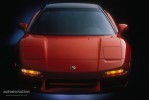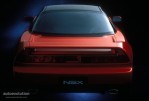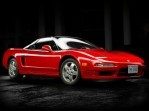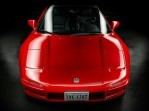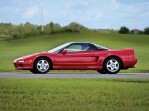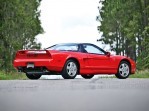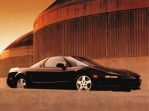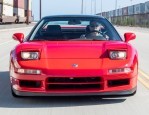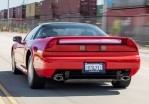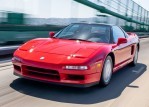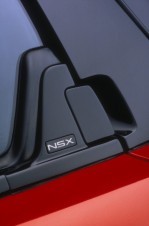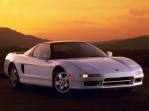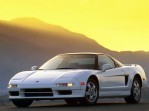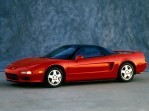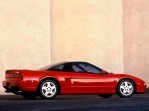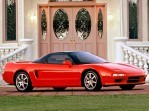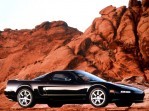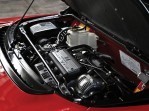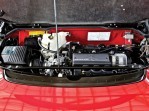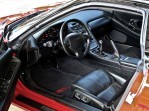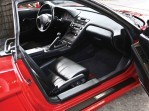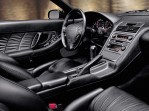Body style: Coupé (two-door)
Segment: Premium Coupe
Production years: 1991, 1992, 1993, 1994, 1995, 1996, 1997, 1998, 1999, 2000, 2001
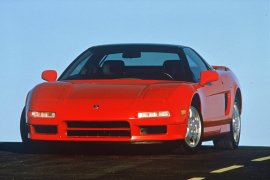 37 Photos
37 PhotosThe 1991 NSX was one of the most iconic sports-car built by Honda, with help of the legendary Formula 1 driver Ayrton Senna and a team of engineers dedicated to the motorsport.
The name comes from the New Sportscar eXperimental, and it was Honda's first all-aluminum body car with a mid-engine. The car was ready to meet the market, but the design and engineering team waited for the final verdict. The new Formula 1 World Champion took the car for a few laps on the Suzuka Race-track after he did first tests with the 1989 McLaren-Honda F1 race-car. The NSX was pushed to its absolute limits. And the final result came after Ayrton Senna stepped down from the car and said: that the car felt nimble, but “a little fragile”.
The car was unveiled at the 1989 Chicago Auto Show. It wasn't 100% ready for the production line. The initial styling was made at the Pininfarina styling center in Italy, and the greenhouse was inspired by the F16 jet-fighter. The use of the aluminum shaved 200 kg (440 lbs) from the body weight. The car featured aluminum independent suspension for front and rear. The pop-up headlights were installed in the non-facelift version.
Initially, the car was studied with a 2.0-liter V6 engine, but the idea was abandoned in favor of a 3.0-liter VTEC engine, which was used until 1997 when a new, 3.2-liter unit, was installed.
The standard transmission was a 5-speed manual and in 1994 a 4-speed automatic with sequential manual shifting was available.
The NSX was sold with the Acura badge in the U.S. while in the rest of the world was sold as Honda NSX. It was considered the first Japanese everyday supercar due to its reliability and ease of driving.
ACURA NSX 1991, 1992, 1993, 1994, 1995, 1996, 1997, 1998, 1999, 2000, 2001
- 3.0L V6 5MT (270 HP)
ACURA NSX
3.0L V6 5MT (270 HP)
ENGINE SPECS - 3.0L V6 5MT (270 HP) | |
|---|---|
| Cylinders: | V6 |
| Displacement: | 2977 cm3 |
| Power: | 201 KW @ 7100 RPM 270 HP @ 7100 RPM 270 BHP @ 7100 RPM |
| Torque: | 210 lb-ft @ 5300 RPM 285 Nm @ 5300 RPM |
| Fuel System: | Electronic Fuel Injection |
| Fuel: | Gasoline |
PERFORMANCE SPECS | |
|---|---|
| Top Speed: | 168 mph (270 km/h) |
| Acceleration 0-62 Mph (0-100 kph): | 5.9 s |
TRANSMISSION SPECS | |
|---|---|
| Drive Type: | Rear Wheel Drive |
| Gearbox: | 5-Speed manual |
BRAKES SPECS | |
|---|---|
| Front: | Ventilated Discs |
| Rear: | Ventilated Discs |
TIRES SPECS | |
|---|---|
| Tire Size: | 205/50ZR ZR15 // 225/50 ZR16 |
DIMENSIONS | |
|---|---|
| Length: | 173.4 in (4404 mm) |
| Width: | 71.3 in (1811 mm) |
| Height: | 46.1 in (1171 mm) |
| Front/rear Track: | 59.4/60.2 in (1,509/1,529 mm) |
| Wheelbase: | 99.6 in (2530 mm) |
| Ground Clearance: | 5.3 in (135 mm) |
| Cargo Volume: | 5 cuFT (142 L) |
| Aerodynamics (Cd): | 0.32 |
WEIGHT SPECS | |
|---|---|
| Unladen Weight: | 3010 lbs (1365 kg) |
FUEL ECONOMY (NEDC) | |
|---|---|
| City: | 16 mpg US (14.7 L/100Km) |
| Highway: | 22 mpg US (10.7 L/100Km) |
| Combined: | 18 mpg US (13.1 L/100Km) |
| CO2 Emissions: | 311 g/km |






